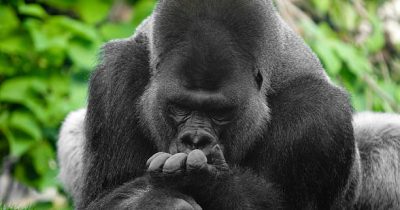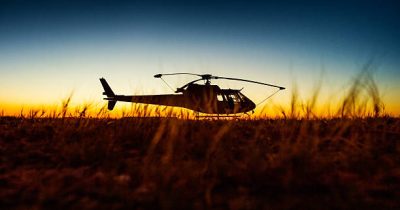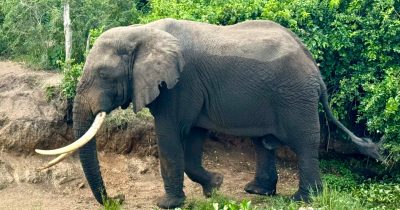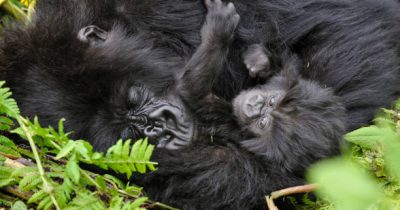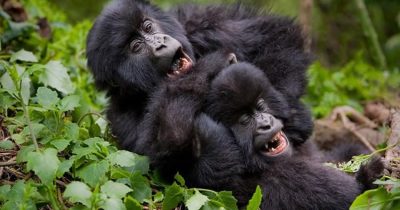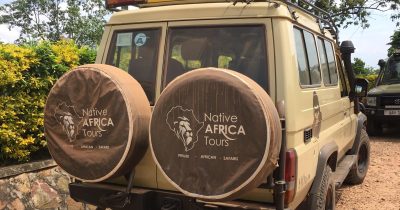Bwindi Gorilla Trekking Sectors
Bwindi gorilla trekking primarily starts from four sectors with unique features and gorilla families. The four gorilla sectors in Bwindi Impenetrable National Park are Rushaga, Nkuringo, Ruhija, and Buhoma. These sectors are significant as they offer different experiences for visitors, ranging from challenging hikes to less strenuous treks. Each sector is home to habituated gorilla groups that visitors can track. Our ultimate guide to Bwindi gorilla trekking sectors provides insights into the details of each sector and their habituated gorilla families. Also, please let me know the location of each gorilla sector or trailhead in Bwindi and the available accommodation options.
Buhoma sector
The Buhoma sector is the most accessible and famous gorilla trekking area in Bwindi Impenetrable National Park. Accessing Buhoma is easier from Kampala and Kabale, where you can drive for about 2 hours to reach this sector. Even if you are in the Ishasha sector of Queen Elizabeth National Park, you can easily connect to the Buhoma sector within a 4-hour drive. Buhoma is situated at the northern end of Bwindi National Park and is best known for its pioneer gorilla family—the Mubare group.
To explore the Buhoma sector in Bwindi, visitors can find habituated mountain gorilla families, including the Mubare family, Habinyanja, Katwe gorilla group, Muyambi group, and Rushegura gorilla group. Buhoma is an exciting location for tracking mountain gorillas in Bwindi Impenetrable National Park.
In addition, visitors can explore various trails in Buhoma, including the Rushura trail, Muzabajiro loop, Waterfall, and River Ivy trail. Adjacent to Buhoma, visitors can experience the Batwa or Bakiga community.
Rest comfortably in and around the Buhoma sector of Bwindi, with a range of diverse accommodation options. Whether you prefer the community atmosphere of Buhoma Community Rest Camp, the luxury of Bwindi Lodge, or the conservation focus of CPTH Gorilla Conservation Camp, there’s something for every traveler.
Ruhija sector
Ruhija sector is located at the eastern end of Bwindi National Park and is known for its relatively gentle terrain. This Gorilla Sector offers less physically demanding treks than the southern gorilla sectors. Approximately four habituated gorilla families reside in the Ruhija sector, including the Bitukura, Kyaguriro, Oruzogo, and Mukiza gorilla groups. These four gorilla trekking families translate to about 32 gorilla permits.
Ruhija, situated at 2350 meters, is home to Bwindi’s highest peak. Due to its altitude, Ruhija is considered the coldest region in Bwindi National Park.
Various accommodation options in Ruhija include Ruhija Gorilla Safari Lodge, Broadbill Forest Camp, Bwindi Panorama Resort, Bwindi Trekkers Tavern Cottages, Agandi Lodge, Bakiga Lodge, and Gorilla Mist Camp.
Nkuringo
The Nkuringo sector is located in the southern part of Bwindi and has four gorilla groups: the Nkuringo group, Christmas, Bushaho, and Posho gorilla families. The Nkuringo region is renowned for its unique terrain, which offers challenging hikes. Visitors can spend nights at lodges such as Gorilla Heights Lodge, Bwindi Backpackers Lodge, Nkuringo Gorilla Lodge, and Clouds Mountain Gorilla Lodge.
Rushaga sector
The Rushaga sector is located at the southern end of Bwindi. It is in the Rushaga sector that the highest concentration of gorilla families in Bwindi resides. They include the Mishaya gorilla group, the Nshongi group, the Kahungye gorilla family, Rwigyi, the Mucunguzi gorilla family, Bweza, the Kutu gorilla family, Bikingi, and others. Rushaga offers not only traditional gorilla treks but also gorilla habituation experiences.
Accommodation options for overnight stays in the Rushaga sector include the Rushaga Gorilla Camp, Four Gorillas Lodge, Rushaga Gorilla Havens Lodge, Gorilla Valley Lodge, Ichumbi Gorilla Lodge, and others. When booking a place to stay, you can choose from budget, midrange, or luxury gorilla lodges.
How is Trekking in Bwindi Done
Gorilla trekking adventures in Bwindi involve primate trekkers searching for a habituated group of mountain gorillas. A maximum of eight people per day visit a single habituated family of mountain gorillas. A gorilla trek in Bwindi begins in the four sectors with a briefing about the rules of gorilla trekking and the allocation of gorilla families.

Gorilla Trekking Rules and Regulations
- All tourists on a gorilla trek in Bwindi must maintain a safe distance of 8 meters from gorillas.
- Visitors can spend up to one hour close to a family of gorillas in Bwindi National Park.
- You can only participate in the trek with gorillas if you are not sick. A park official can deny you the opportunity to track gorillas if you are ill. Gorillas are vulnerable to infectious diseases, and visiting them while sick increases the risk of transmission. Up to 98% of gorillas’ DNA is similar to that of humans.
- Each habituated gorilla group is visited by a maximum of 8 guests daily. The maximum number of visitors must be respected to maintain the carrying capacity of each gorilla family and the habitat in general.
- Photography is permitted, but cameras should not use flashlights. Flashlights can scare or irritate the gorillas.
- Stay calm and listen to your park ranger guide when a gorilla charges. Do not run away, as a gorilla may follow you, believing you are a threat.
- Avoid physical contact with gorillas. Stay away from these apes; do not touch them, even if they approach you.
- Always keep your voice low. Shouting while trekking gorillas in the jungle can agitate these animals, prompting them to charge at you in response.
- When trekking gorillas, keep their habitat clean and secure. Avoid littering; carry any waste back to designated disposal areas.
- Protect gorillas by covering your mouth when coughing and your nose when sneezing.
- Bury all human waste (feces) deep in a hole as instructed by the park ranger guide.
The best time to visit Bwindi
A successful gorilla trekking adventure in Bwindi is best enjoyed during the dry season, which runs from June to August and December to February. During these months, Bwindi experiences low or no rainfall, keeping the forest floor drier and more passable.
In contrast, the wet or rainy months bring heavy rains, making the ground slippery and muddy. The vegetation tends to be thick, making walking through the forest and photography challenging. The rainy months in Bwindi are March, April, May, October, and November.
What to pack for a gorilla trekking Expedition
Items to pack for gorilla trekking include sunscreen, insect repellent, long trousers, rain gear, a camera, waterproof hiking boots, high-energy snacks, a waterproof daypack, adequate bottled drinking water, a pair of binoculars, a first aid kit, and many others.

